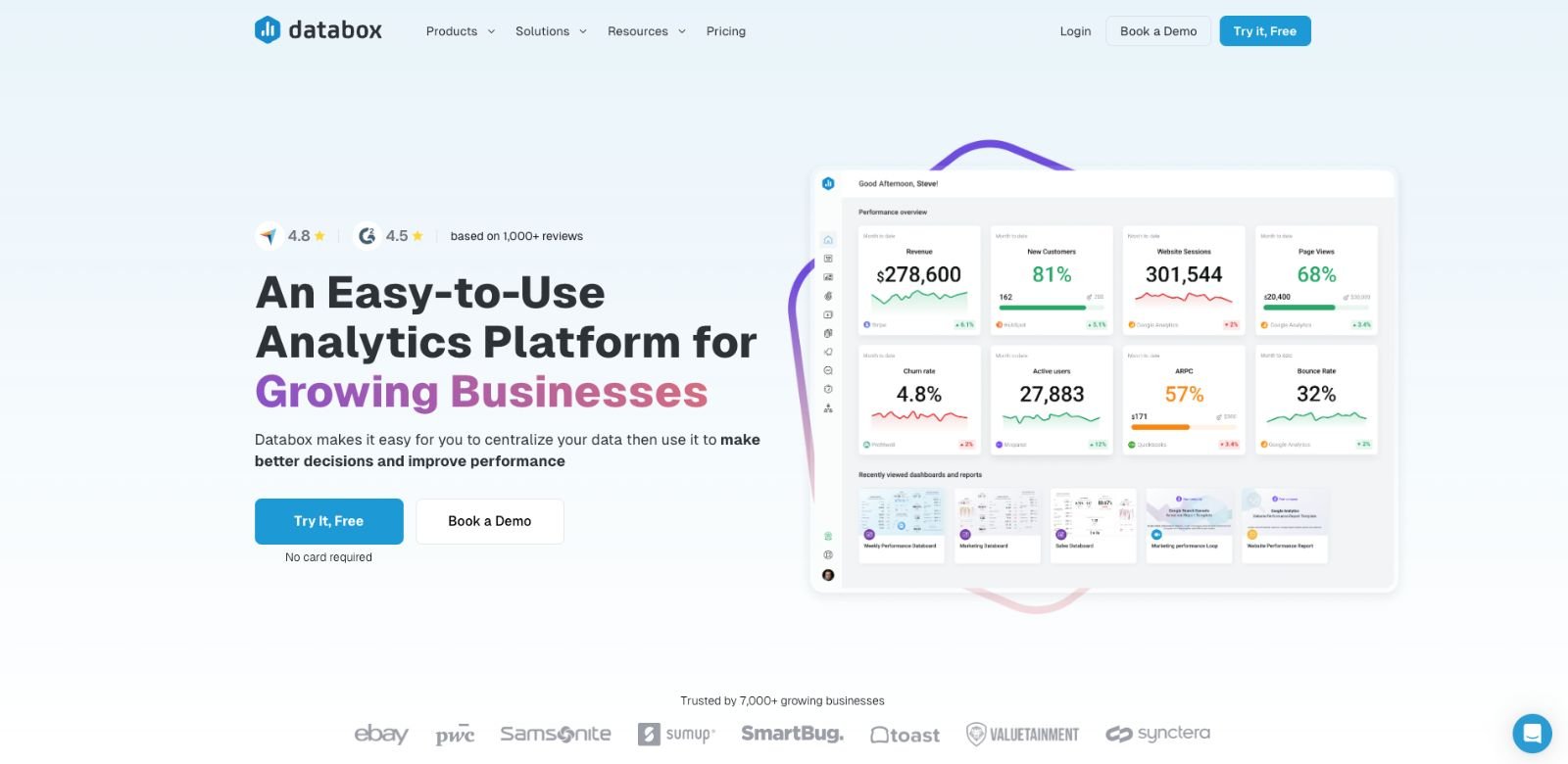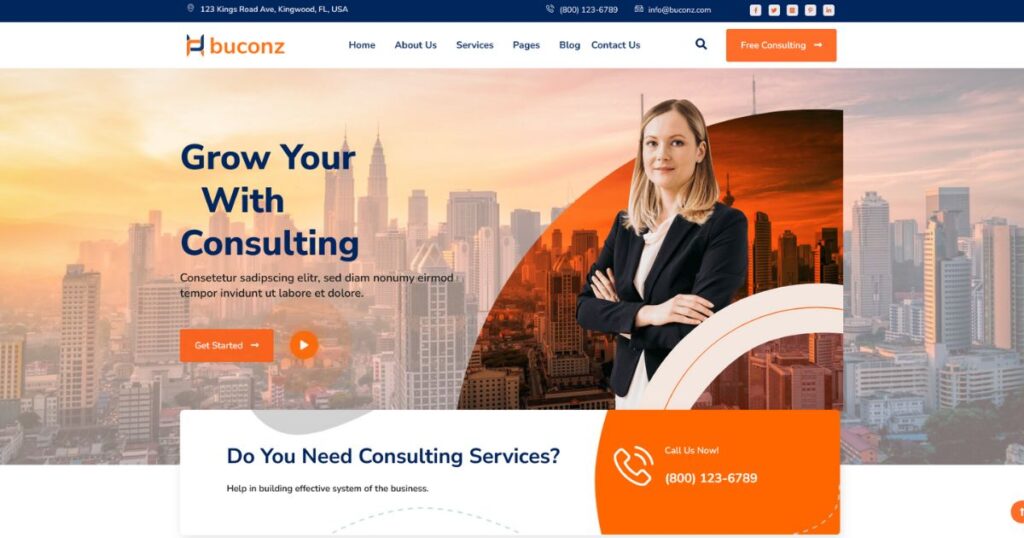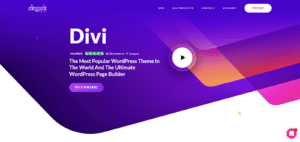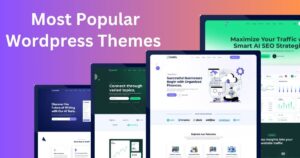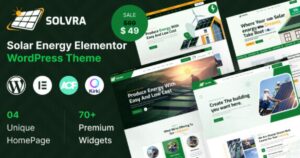Are you looking to create a standout SaaS website that captures attention and drives engagement? The design of your SaaS website is more than just a digital storefront; it’s a powerful tool that can make or break your connection with potential customers.
Imagine visiting a website that instantly speaks to your needs, is easy to navigate, and leaves you with a lasting impression. That’s the magic of effective SaaS website design. We’ll explore the key elements you need to create a website that not only looks good but also converts visitors into loyal users.
Are you ready to transform your online presence and boost your business? Let’s dive in and unlock the secrets to exceptional SaaS website design.
Key Elements Of Saas Website Design
Designing a SaaS website requires careful attention to detail. It’s not just about aesthetics; it’s about creating a seamless user experience. The design should cater to the needs of the user while effectively showcasing the product. Key elements like user-centric design, visual hierarchy, and responsive design are crucial. They ensure the website is functional, attractive, and easy to navigate.
User-centric Design
User-centric design focuses on the needs and preferences of the user. It prioritizes ease of use and intuitive navigation. Users should find information quickly and effortlessly. Simplified navigation reduces frustration and enhances satisfaction. Every element should serve a purpose, guiding the user smoothly through the site.
Visual Hierarchy
Visual hierarchy helps direct the user’s attention. It organizes content by importance, creating a natural flow. Use different font sizes, colors, and spacing to distinguish elements. Important information stands out, while secondary details are less prominent. This makes it easier for users to absorb key messages.
Responsive Design
Responsive design ensures the website looks good on all devices. Whether accessed on a phone, tablet, or desktop, the site should function well. Adjust images and text to fit different screen sizes. This maintains usability and keeps users engaged. A responsive site adapts to the user’s device, providing a consistent experience.
Enhancing User Experience
SaaS website design focuses on creating clear and simple interfaces. This design approach makes it easy for users to navigate. Fast loading times and responsive layouts improve user satisfaction.
Enhancing user experience is vital for any SaaS website. A well-designed interface keeps users engaged and satisfied. It encourages them to explore more features. Good design can turn visitors into loyal customers. Focus on user needs and preferences to achieve this.
Intuitive Navigation
Navigation should be simple and clear. Users find what they need quickly. Use clear labels for menu items. Group related items together. Limit the number of clicks to reach important pages. The navigation bar should be visible on every page. Consistent design helps users feel at ease.
Fast Loading Times
Nobody likes to wait for slow pages. Speed is crucial for keeping users. Optimize images and reduce file sizes. Use efficient coding practices. Fast websites improve user satisfaction. They also rank better in search engines. Test your site on different devices and browsers. Ensure it loads quickly everywhere.
Accessible Content
Content must be easy to read and understand. Use simple language and short sentences. Break up text with headings and bullet points. Ensure your site works with screen readers. Include alt text for images. This helps visually impaired users. Make sure buttons and links are easy to click. Accessibility improves overall user experience.
Effective Calls To Action
Effective calls to action (CTAs) are crucial for any SaaS website design. They guide users towards desired actions and conversions. With clear CTAs, users can easily navigate your services. Well-designed CTAs can significantly boost engagement and conversion rates.
Strategic Placement
Position your CTAs where users are most likely to see them. Place them above the fold for immediate visibility. Ensure CTAs are near relevant content. Users should find them naturally while browsing. Avoid clutter around your CTAs. Clear surroundings enhance focus and attention.
Compelling Copy
Use direct and clear language in your CTAs. Short phrases work best. “Start Free Trial” or “Contact Us” are effective examples. Tailor your copy to user needs. Highlight benefits to encourage clicks. Ensure your message matches your brand tone.
A/b Testing
Test different CTA designs and placements. Compare user interactions and conversion rates. Adjust based on performance data. Use A/B testing to optimize your CTAs. Experiment with colors, sizes, and wording. Find what resonates with your audience.
Optimizing For Conversion
Crafting a Saas website to boost conversions involves clear calls-to-action and intuitive navigation. Simplified design enhances user experience, encouraging engagement. Responsive layouts ensure accessibility across devices, fostering customer trust and retention.
Optimising a SaaS website for conversion is crucial. It means turning visitors into customers. Focusing on design elements can boost conversion rates. A well-designed site builds trust and guides users smoothly. Let’s explore key areas like trust signals, signup processes, and personalisation.
Trust Signals
Trust is vital for online transactions. Users need to feel secure. Display testimonials and case studies. They show real user success. Use security badges to reassure visitors. These symbols indicate to users that their data is secure. Highlight your privacy policy. It helps users feel protected.
Simplified Signup Process
A complicated signup can deter users. Keep it simple. Only ask for essential information. Long forms can frustrate users. Offer social media signups. This speeds up the process. Allow users to explore before signing up. It builds confidence in your service.
Personalization
Personalization enhances user experience. Tailor content to user preferences. Use data to understand user needs. Offer relevant recommendations. This keeps users engaged. Personalization can lead to higher satisfaction. Satisfied users are more likely to convert.
Engagement Through Interactive Features
Creating a SaaS website that captivates your audience isn’t just about stunning visuals. It’s about making the user experience interactive and engaging. When users can actively participate, they stay longer and become more invested in what you offer. Let’s explore how specific interactive features can elevate your SaaS website design.
Live Chat Support
Imagine visiting a website and feeling like you’re talking to a friend. Live chat support can make that happen. It provides instant responses to customer queries, making users feel valued and understood.
You’re offering more than just a service; you’re providing a lifeline. Think back to the last time you used live chat and how seamless the experience felt. Wasn’t it reassuring to get quick answers? Implementing this feature can turn potential confusion into clarity for your users.
Consider using an AI-assisted chat to handle basic questions, freeing up your support team for more complex inquiries. This balances efficiency and personalization, ensuring users always have access to help.
Interactive Demos
Why tell when you can show? Interactive demos allow users to experience your product firsthand. They can explore features and understand benefits before committing.
Picture yourself trying out a new software tool without interactive demos. Wouldn’t it feel daunting and uncertain? Give users the chance to navigate through your product, making them more confident in their decision to invest.
Providing step-by-step guidance within demos can highlight key features and benefits, making the learning curve less steep. Users will appreciate the transparency and feel empowered to make informed choices.
Gamification Elements
Who says business can’t be fun? Gamification elements can transform mundane tasks into exciting challenges. They engage users by tapping into our natural love for games.
Think of a time when you played a game that kept you coming back for more. Wasn’t the reward system enticing? Integrating similar elements in your SaaS website can motivate users to explore deeper.
Consider badges, points, or leaderboards. These can encourage users to interact more with your platform, fostering a sense of achievement and community. Are you ready to make your SaaS website an engaging playground for your users?
Utilizing Analytics And Feedback
Utilizing analytics and feedback is crucial for SaaS website design. These tools help optimize user experience. They provide insights into user behavior and preferences. This allows businesses to refine their design strategies. Understanding what users need leads to better engagement and satisfaction. Analytics and feedback are the backbone of effective design improvement.
Tracking User Behavior
Tracking user behavior reveals how visitors interact with a site. It helps identify which pages attract most attention. This data pinpoints areas needing improvement. It shows which features users find useful. By analyzing this, designers can make informed decisions. Focus on enhancing user experience and boosting engagement.
Feedback Loops
Feedback loops gather direct user input. They provide valuable insights into user preferences. Users share what they like or dislike. This information helps tailor the website to meet user expectations. Regular feedback collection is essential. It ensures the design evolves with user needs.
Iterative Design Improvements
Iterative design improvements involve continuous updates. They refine the website based on analytics and feedback. Small changes lead to significant enhancements over time. This approach allows for flexible adjustments. Designers can test and implement new ideas. It ensures the website remains user-friendly and effective.
Seo And Content Strategy
Designing a SaaS website involves more than just aesthetics. A strong SEO and content strategy is essential. This strategy helps you reach your audience and improve your site’s visibility. A well-planned approach can drive organic traffic and boost engagement. Let’s explore some key elements of this strategy.
Keyword Optimization
Keywords are the foundation of any SEO strategy. They guide search engines to your content. Use tools to find relevant keywords for your SaaS business. Place these keywords naturally in your content. Ensure they’re in titles, headings, and body text. Avoid keyword stuffing as it can hurt your rankings.
Quality Content
Content quality impacts how users and search engines view your site. Provide valuable information that solves problems for your audience. Use clear and simple language. Break down complex topics into digestible parts. This keeps readers engaged and encourages them to return. Quality content also builds trust with your audience.
Regular Updates
Fresh content signals to search engines that your site is active. Regular updates can improve your rankings. Plan a schedule for posting new content. Update existing pages with current information. This practice keeps your content relevant and useful. Regular updates encourage repeat visits from your audience.


Frequently Asked Questions
What Is Saas Website Design?
SaaS website design focuses on creating user-friendly, responsive sites for software-as-a-service platforms. It emphasizes intuitive navigation, clear CTAs, and scalable layouts. The design aims to enhance user experience, boost engagement, and drive conversions. Incorporating modern design trends, it ensures seamless integration of SaaS features and services, promoting accessibility and efficiency.
What Is The Saas Website?
A SaaS (Software as a Service) website offers software as a service over the internet. Users access applications via a web browser, eliminating the need for installations. This model provides scalability, easy updates, and reduced costs for businesses and individuals. Popular SaaS examples include Google Workspace, Slack, and Salesforce.
How Much Does It Cost To Build A Saas Website?
Building a SaaS website typically costs between $10,000 and $100,000. Costs vary based on complexity, features, and design. Simple platforms might be cheaper, while complex systems with custom features cost more. Hiring experienced developers or agencies can increase expenses. Always consider ongoing maintenance and updates in your budget.
What Is The Structure Of A Saas Website?
A SaaS website typically includes a homepage, product pages, pricing, features, testimonials, FAQs, and a contact page. It focuses on clear navigation, engaging visuals, and strong calls to action. Optimizing for SEO involves using relevant keywords, meta tags, and responsive design to enhance user experience and search engine ranking.
Conclusion
Crafting an effective SaaS website design is crucial. It should be user-friendly and visually appealing. Focus on clean layouts and intuitive navigation. Prioritize fast load times. Ensure mobile responsiveness. These elements enhance user experience and build trust. Regular updates keep your site fresh and relevant.
Always align design with your brand identity. This consistency strengthens your message. Remember, your website is often the first impression. Make it a strong one. A well-designed site attracts and retains users. Invest time and effort in thoughtful design. Your SaaS success depends on it.

